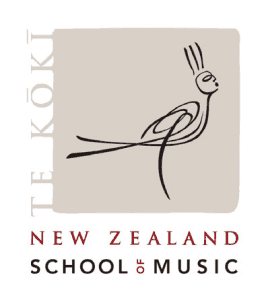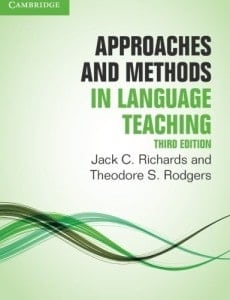Question:
Submitted by Benmenni Imene, Algeria
What is the effect of interaction in learning a second language?
Professor Richards Responds:
A learning theory that has had considerable influence on language teaching is interactional theory – a social view of language acquisition that focuses on the nature of the interaction that occurs between a language learner and others he or she interacts with, and how such communication facilitates second language acquisition. Communicative language teaching and Task-Based Teaching both reflect this view of learning. Interaction is said to facilitate language learning in a number of ways:
Modification of input
At the core of the theory of language learning as an interactive process is the view that communication can be achieved between a second language learner and a more proficient language user (e.g. a native-speaker) only if the more proficient user modifies the difficulty of the language they use. If the input is too difficult or complex, of course, it may lead to communication breakdown. Therefore, when communicating with learners with limited English proficiency, speakers will typically modify their input by using known vocabulary, speaking more slowly, saying things in different ways, adjusting the topic, avoiding idioms, using a slower rate of speech, using stress on key words, repeating key elements, using simpler grammatical structures, paraphrasing and elaborating. In this way, the input better facilitates both understanding as well as learning.
The following are strategies that can be used to facilitate comprehension:
Negotiation of meaning
This refers to meaning that is arrived at through the collaboration of both people involved. This negotiation may take several forms:
- The meaning may be realized through several exchanges, or turns, rather than in a single exchange.
- One speaker may expand on what the other has said.
- One speaker may provide words or expressions the other needs.
- One person may ask questions to clarify what the other has said.
Interactions of this kind are believed to facilitate language acquisition, evidence for which may be seen both in short term as well as longer-term improvements in grammatical accuracy.
Repairing misunderstanding
If the learner is to succeed in communicating with others, despite limitations in his or her language proficiency, he or she needs to be able to manage the process of communication in a way that deals with communication difficulties. This can be achieved through the use of communication strategies such as the following:
- Indicating that he or she has misunderstood something.
- Repeating something the other person has said, to confirm understanding.
- Restating something, to clarify meaning.
- Asking the other person to repeat.
- Asking the other person for clarification.
- Repeating a word or phrase that was misunderstood.
In interactional theory, the learner’s ability to pay attention and request feedback is considered an essential feature of successful second language learning.
Modifying input
A feature of interactions between native speakers (or advanced language users) and second language learners is modification of the native-speaker’s language to facilitate comprehension. Modification of “input” is often seen in interactions like these:
- Clerk to customer: You need to fill in the form. The form. You need to fill it in. Write here, please.
- Adult to visitor: Which part of Japan are you from? Are you from Tokyo?
- Supervisor to factory worker: You start this one first. Finish. Then you see me.
- Advanced-level learner to lower-level learner: You need to review your essay before you hand it in – you know, go through and check the spelling and the organization carefully.
When people communicate with learners who have a very limited level of proficiency in a second language, they often use strategies of this kind, using a form of communication sometimes referred to as ‘foreigner talk’. Other examples of this kind of modified talk are known as teacher talk, and caretaker talk (e.g. the interaction between a parent and a very young child). Similarly, when a learner interacts with a person who is a more advanced language user, the input the advanced user provides often helps the learner expand his or her language resources. For example, the reformulation of the learner’s utterance may draw attention to, or help the learner notice, features of the language, as we see in these exchanges between a student and a teacher:
S: I’m going away for weekend.
T: You’re going away for the weekend?
S: Yes, away for the weekend.
T: What did you buy at the sale?
S: I bought it. This bag.
T: Oh, you bought this bag? It’s nice.
S: Yes, I bought this bag.
S: Last week, I go away.
T: Oh, you went away last week?
S: Yes, I went away.
Negotiation of meaning often occurs spontaneously as well. For example, the following negotiation of meaning was observed between a learner and a native speaker: the learner wished to express that she lived in a shared apartment near the campus with two other students.
S1: So, where are you staying now?
S2: Staying an apartment. Together some friends.
S1: That’s nice. How many of you?
S2: Staying with three friend. Sharing with Nada and Anna. Very near.
S1: It’s near here? Near the campus?
S2: Yes, it’s near the campus. On Forbes street.
Repeated opportunities to communicate in this way are said to provide opportunities for learners to expand their language resources and are often used with communicative approaches to teaching.

 Dr. Richards is an enthusiastic art and music lover and supporter of activities such as the
Dr. Richards is an enthusiastic art and music lover and supporter of activities such as the  The new Jack C Richards Decorative Art Gallery, part of the Tairawhiti Museum in Gisborne, New Zealand, opened on 16th May, 2014.
The new Jack C Richards Decorative Art Gallery, part of the Tairawhiti Museum in Gisborne, New Zealand, opened on 16th May, 2014.
